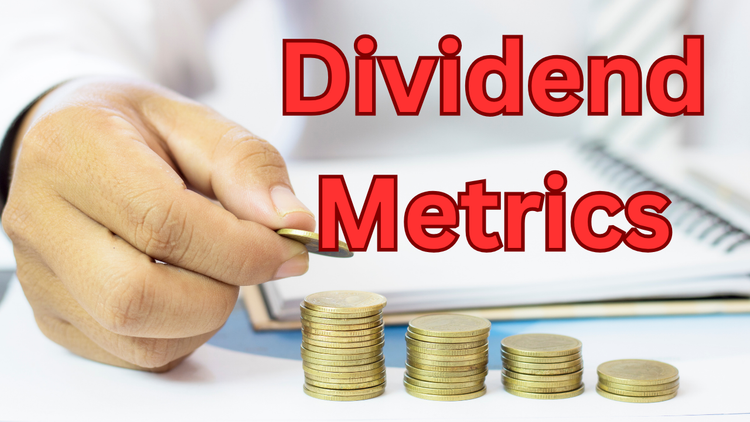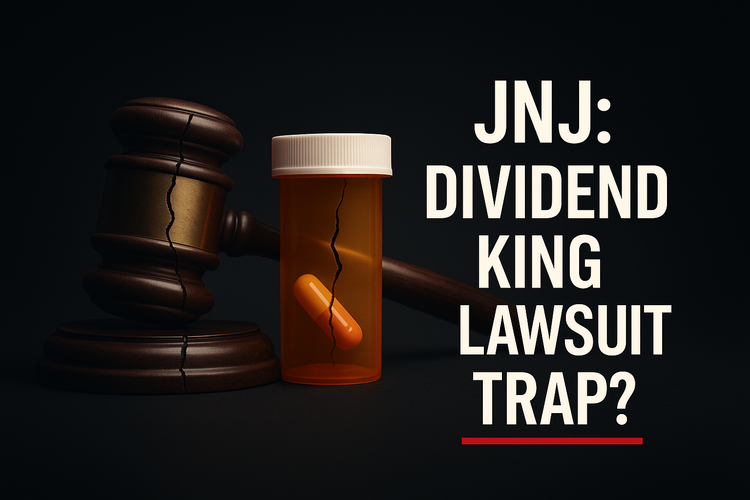5 Dividend Kings Paying Over 3% in 2025

Here’s a hard truth for anyone chasing growth in 2025:
If your dividend yield dips below 3%, you’re basically handing your money to Treasury bonds — risk-free returns that laugh at your portfolio’s effort.
High yields aren’t a free lunch. They come with the risk of cuts when a business can’t sustain them — and that’s where most investors get trapped chasing shiny, unsustainable payouts.
This post cuts through that noise.
We’re zeroing in on five Dividend Aristocrats and Kings that deliver yields above 3.5%, backed by decades of growth, conservative payout ratios, and strong free cash flow or FFO coverage.
All data is verified as of October 15, 2025, sourced from company investor relations, S&P Dow Jones Indices, and SEC filings. No guesswork. No recycled internet lists.
These aren’t speculative bets — they’re cash machines built to survive cycles.
Myths die when the cash clears.
Like this kind of no-BS analysis? Subscribe to Phaetrix for weekly breakdowns that cut through the noise.
What to Look for — and What to Avoid
Before we get to the names, let’s draw the line between true dividend powerhouses and the pretenders.
First, only companies with 25+ consecutive years of dividend increases make the cut. That track record proves resilience through recessions, booms, and everything in between.
Second, payout ratios must stay below 90% of EPS (or FFO for REITs). That leaves room for reinvestment while protecting the payout.
Free cash flow payout under 80% is non-negotiable for non-REITs.
Real dividends come from real cash — not accounting smoke.
We also confirm recent dividend declarations and eliminate any company showing rising payout risk.
And about the ex-dividend date drop? That’s not a loss — it’s math. The share price simply adjusts by the dividend amount. Smart investors reinvest those payouts and let compounding do the work.
By following these guardrails, you build portfolios that prioritize durability over hype, turning income streams into long-term wealth engines.
Hormel Foods (HRL): The Resilient Consumer Staples Powerhouse
Hormel has raised its dividend for 59 straight years — a streak that’s survived everything from commodity shocks to shifting diets.
As of October 15, 2025, Hormel pays $0.29 quarterly, yielding 4.85%. That’s reliable income that outpaces inflation without leaning on speculation.
Payout ratio: ~84%, comfortably supported by free cash flow from brands like Spam, Jennie-O, and Skippy.
When shelves empty, Hormel still sells.
That’s the definition of dependable cash flow.
Management projects 3–4% annual dividend growth, with efficiency gains and international expansion driving long-term compounding.
Key risk: rising input costs — but Hormel’s diversified protein mix and clean balance sheet keep margins steady. It’s a bedrock income stock for DIY investors.
T. Rowe Price Group (TROW): The Enduring Asset Management Leader
T. Rowe Price shows how discipline pays off — 39 consecutive years of dividend hikes backed by a fee-based model that thrives on long-term performance.
The quarterly dividend of $1.27 gives a 4.82% yield, beating Treasury returns while offering market-linked upside.
Payout ratio: ~57%, leaving wide room for continued growth and buybacks.
This is income with leverage — your payout grows when markets recover.
With roughly 8% annualized total returns over time, TROW blends yield and growth better than most financial stocks.
Key risk: market downturns may pressure assets under management, but the company’s loyal client base and conservative operations keep it resilient.
Chevron Corporation (CVX): The Energy Giant’s Steady Flow
Chevron’s 38-year dividend streak defines reliability in a volatile sector.
It pays $1.71 quarterly, yielding 4.59%, with a payout ratio near 86% — high, but backed by $20B+ in annual free cash flow.
Chevron doesn’t just survive cycles — it mints cash through them.
Dividend growth around 6% annually looks secure as it expands in the Permian and integrates Hess.
Key risk: crude-price swings and geopolitical risk. But Chevron’s diversified operations hedge its exposure and keep the dividend flowing.
This is how you capture yield in energy without betting on unproven green experiments.
Stanley Black & Decker (SWK): The Industrial Tools Stalwart
Stanley Black & Decker’s 59-year dividend streak proves durability in an industry tied to economic cycles.
The quarterly dividend of $0.83 equals a 5.15% yield, the highest on this list.
Payout ratio: ~104% (temporarily inflated by a down cycle), but improving as free cash flow rebounds through cost cuts and housing demand recovery.
When you’ve paid dividends for six decades straight, you earn the benefit of patience.
Key risk: execution on the turnaround. But Stanley’s global footprint and brands like DeWalt and Craftsman give it leverage when construction demand rebounds.
Realty Income Corporation (O): The Monthly Dividend Dynamo
Realty Income — the “Monthly Dividend Company” — has paid 664 straight monthly dividends, a 55-year streak that defines consistency.
The monthly payout of $0.2695 per share translates to a 5.5% annual yield, compounded monthly — rare stability in real estate.
FFO payout: ~76% with 1.33× coverage, leaving room for 4% annual growth.
This isn’t a REIT — it’s a rent-powered dividend machine.
With 15,000+ properties leased to recession-proof tenants like drugstores and discount retailers, Realty Income remains one of the safest high-yield REITs.
Key risk: higher refinancing costs and tenant concentration. But scale and balance-sheet strength keep risk contained.
The Truth Behind High-Yield Fears
High yield isn’t the enemy. Weak coverage is.
Myth #1: High yields kill growth.
Wrong. Hormel and Stanley Black & Decker have combined 4.8%+ yields with 9–11% total returns, driven by operational strength.
Myth #2: High payouts mean a cut is coming.
Also wrong. Chevron’s 86% payout is covered by massive cash flow, while Realty Income’s 1.33× FFO coverage keeps monthly checks secure.
Myth #3: Dividends drag down price performance.
False again. Ex-dividend drops are mechanical — reinvest and let compounding work while others panic.
The smartest investors don’t chase yield — they measure it against coverage and history.
If this helped clarify how to separate real yield from traps, share it — other DIY investors need this kind of straight talk too.
Actionable Takeaways: How to Use These in Your Portfolio
1. Verify and Diversify
Always verify data. Check the S&P Dividend Aristocrats list and company IR pages before buying.
Keep any one name under 10% of portfolio exposure.
2. Time Dividends Wisely
Watch ex-dividend dates. Avoid chasing post-announcement pops — plan your entries around reinvestment and compounding.
3. Reinvest and Manage Taxes
Use DRIPs to automate compounding.
Hold REITs like Realty Income in tax-advantaged accounts to offset ordinary income treatment.
Avoid the yield traps — 3M’s cut earlier in the decade was a warning.
Always prioritize free cash flow coverage over headline yield.
Quick Reference: Dividend Strength at a Glance
Every one of these stocks clears the 3% floor with sustainable backing.
Here’s how they stack up side by side.
| Stock | Yield | Payout Ratio | 5-Year DGR | Streak (yrs) |
|---|---|---|---|---|
| HRL | 4.85% | 84% | 6% | 59 |
| TROW | 4.82% | 57% | 9% | 39 |
| CVX | 4.59% | 86% | 6% | 38 |
| SWK | 5.15% | 104%* | 4% | 59 |
| O | 5.5% | 76% (FFO) | 3% | 55+ |
EPS payout inflated by cycle; FCF improving. FFO for REITs; EPS otherwise.
Bottom Line — Yield with Discipline Wins
In a world where Treasuries look safe, disciplined dividend investing still wins.
High yield only works when it’s covered, consistent, and compounding.
These five names prove you can beat bonds without gambling on hype.
They build income and equity side by side, turning volatility into opportunity.
Execute with precision. Verify your data.
Then let time — and the cash — do the heavy lifting.
Want the next yield + coverage screen and no-BS market notes? Subscribe to Phaetrix.
Sources: Company IR (dividends & payout) · S&P Dividend Aristocrats list (streaks) · SEC filings (FCF/FFO)
Educational only — not investment advice. Do your own due diligence or consult a financial advisor before investing.






Member discussion